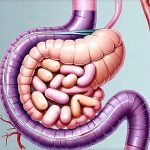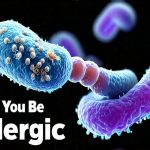The intricate connection between our gut microbiome and overall health is increasingly recognized, extending far beyond simple digestion. One fascinating area of exploration lies in the relationship between gut dysbiosis – an imbalance in the composition of gut bacteria – and histamine intolerance (HIT) or sensitivity. Histamine, a crucial signaling molecule involved in numerous physiological processes like immune response, gastric acid secretion, and neurotransmission, can cause significant issues when its metabolism is disrupted. While some individuals experience true histamine allergy (mediated by IgE antibodies), HIT isn’t an allergic reaction; it’s a problem with the body’s ability to break down histamine efficiently. This leads to a buildup of histamine, resulting in a wide spectrum of symptoms that can mimic allergies, digestive disorders, neurological conditions, and even skin problems.
The gut plays a pivotal role in histamine metabolism, acting as both a source and a major site for its breakdown. A healthy gut microbiome contributes significantly to this process, while dysbiosis can directly impair it. The complexity arises from the interplay between various microbial species; some produce histamine (e.g., certain strains of E. coli), others degrade it (like Bifidobacterium and Lactobacillus), and still others influence the activity of diamine oxidase (DAO), the primary enzyme responsible for histamine breakdown in the gut. Therefore, an imbalance can tip the scales, leading to increased histamine levels and triggering symptoms associated with intolerance or sensitivity. Understanding this intricate relationship is crucial for developing effective management strategies that address the root cause rather than just masking the symptoms. Considering the impact of imbalances on overall health, understanding gut biome diversity can be a powerful step towards relief.
Gut Dysbiosis: A Catalyst for Histamine Imbalance
Gut dysbiosis isn’t a single entity but a spectrum of imbalances, ranging from minor shifts in microbial composition to significant depletion of beneficial bacteria and overgrowth of potentially harmful ones. Several factors can contribute to its development, including diet (high in processed foods, sugar, and alcohol), antibiotic use, chronic stress, infections, and environmental toxins. When dysbiosis occurs, it directly impacts histamine metabolism in several ways.
- Firstly, a reduction in DAO-producing bacteria – such as Bifidobacterium species – diminishes the gut’s capacity to break down ingested histamine.
- Secondly, an overgrowth of histamine-producing bacteria can increase histamine production within the gut itself, adding to the overall burden.
- Thirdly, dysbiosis often leads to increased intestinal permeability (“leaky gut”), allowing more histamine and other substances to enter the bloodstream, further exacerbating symptoms. The connection between leaky gut and digestive health is undeniable.
This creates a vicious cycle: dysbiosis increases histamine levels, which can then negatively impact gut health, leading to more dysbiosis. It’s important to note that individual responses vary greatly; genetic factors, lifestyle habits, and pre-existing conditions all play a role in determining susceptibility to HIT and the severity of symptoms. Furthermore, the specific type of dysbiosis matters – different microbial imbalances can manifest differently and require tailored interventions. The gut microbiome is not simply about having ‘good’ or ‘bad’ bacteria; it’s about achieving a balance and diversity that supports optimal histamine metabolism. As these imbalances can lead to discomfort, understanding histamine intolerance is key for effective management.
Histamine Intolerance: Beyond Allergy
Histamine intolerance (HIT) differs significantly from a true histamine allergy, although the symptoms can sometimes overlap, causing confusion. A classic allergic reaction involves the immune system recognizing histamine as a threat and producing IgE antibodies against it. This triggers mast cell activation and rapid release of histamine, leading to immediate reactions like hives, swelling, and difficulty breathing. HIT, on the other hand, is generally not immune-mediated. It occurs when DAO enzyme activity is insufficient to break down ingested or internally produced histamine effectively.
This can be caused by several factors, including: – Genetic predispositions affecting DAO production – some individuals are born with lower levels of this enzyme. – Small intestinal bacterial overgrowth (SIBO) which impacts DAO production and gut health. – Nutrient deficiencies, such as vitamin B6, copper, and magnesium, which are cofactors for DAO activity. – Certain medications, like proton pump inhibitors (PPIs), can reduce stomach acid production, impairing histamine breakdown in the stomach before it reaches the intestines. – Mast cell activation syndrome (MCAS) where mast cells release excessive amounts of histamine regardless of allergy triggers.
The symptoms of HIT are incredibly diverse and often fluctuate in severity. Common complaints include: headaches/migraines, skin rashes (hives, eczema), digestive issues (bloating, diarrhea, constipation), nasal congestion, flushing, fatigue, anxiety, irregular heartbeat, and menstrual problems. Because of this wide range of symptoms, HIT is notoriously difficult to diagnose and is frequently misdiagnosed as other conditions. Diagnosis often relies on a combination of symptom evaluation, dietary elimination trials (removing high-histamine foods) and sometimes DAO enzyme supplementation to see if symptoms improve. The cyclical nature of gut health can be impacted by menstrual cycle phases as well, so understanding these connections is important.
Identifying Gut Imbalances & Histamine Production
Pinpointing the specific gut imbalances contributing to HIT requires careful assessment. While stool testing can provide valuable information about the composition of the microbiome, it’s not a complete picture. It’s crucial to remember that stool tests represent only a snapshot of the vast and dynamic ecosystem within the gut. More comprehensive assessments may include:
- Comprehensive Stool Analysis: Identifies bacterial imbalances, yeast overgrowth, and markers of inflammation.
- SIBO Breath Testing: Detects small intestinal bacterial overgrowth, a common contributor to HIT.
- DAO Activity Testing: Measures DAO enzyme activity in the gut or blood.
- Organic Acids Test (OAT): Evaluates metabolic byproducts that can indicate imbalances and nutrient deficiencies affecting histamine metabolism.
However, test results should always be interpreted within the context of an individual’s symptoms and medical history. Identifying histamine-producing bacteria specifically is challenging with current testing methods, but focusing on restoring overall microbial balance and reducing inflammatory processes can indirectly address this issue. It’s also important to remember that histamine isn’t just produced in the gut; it’s also synthesized by immune cells and other tissues throughout the body. Therefore, a holistic approach is essential. Many of these imbalances are linked to cold symptoms and digestive issues.
Dietary Strategies for Histamine Management
Diet plays a critical role in managing HIT symptoms. While there’s no one-size-fits-all diet, several general principles can help reduce histamine burden:
- Low-Histamine Diet: Focus on fresh, whole foods and avoid fermented foods (sauerkraut, yogurt, kombucha), aged cheeses, cured meats, alcohol (especially red wine), vinegar-containing foods, and certain vegetables like spinach and tomatoes.
- Freshness is Key: Histamine levels increase as food ages, so prioritize freshly prepared meals and minimize leftovers.
- Identify Personal Triggers: Keep a detailed food diary to identify individual sensitivities and trigger foods beyond the common culprits.
It’s crucial to avoid overly restrictive diets that can lead to nutrient deficiencies or exacerbate anxiety around food. Working with a registered dietitian experienced in HIT can help create a balanced and sustainable dietary plan. Beyond simply eliminating high-histamine foods, incorporating gut-healing nutrients like glutamine, zinc, and omega-3 fatty acids can support intestinal health and DAO enzyme activity.
Supporting DAO Production & Gut Health
Restoring optimal gut function is paramount for managing HIT long-term. This involves addressing the underlying dysbiosis and supporting DAO production:
- Probiotic Supplementation: Select probiotic strains known to produce DAO or promote a balanced microbiome, such as Bifidobacterium infantis and specific Lactobacillus strains. However, caution is needed; some probiotics can actually increase histamine levels in certain individuals.
- Prebiotic Foods: Encourage the growth of beneficial bacteria with prebiotic-rich foods like garlic, onions, asparagus, and bananas (tolerated if not a trigger).
- Nutrient Support: Ensure adequate intake of vitamin B6, copper, magnesium, and riboflavin, which are essential cofactors for DAO activity. Consider supplementation under the guidance of a healthcare professional.
- Stress Management: Chronic stress can negatively impact gut health and histamine metabolism. Incorporate stress-reducing techniques like meditation, yoga, or deep breathing exercises.
- Address Leaky Gut: Support intestinal barrier function with glutamine, collagen peptides, and other gut-healing nutrients.
Ultimately, managing HIT requires a personalized approach that addresses the underlying causes of histamine imbalance. By understanding the intricate relationship between gut dysbiosis and histamine metabolism, individuals can take proactive steps to restore balance, reduce symptoms, and improve their overall health and well-being. The impact of gut microbiota on conditions like diabetes is also important to understand in this context https://vitagastro.com/the-relationship-between-gut-microbiota-and-diabetes/. Furthermore, the connection between gut health and weight management is often overlooked – https://vitagastro.com/the-relationship-between-gut-microbiota-and-obesity/.


















